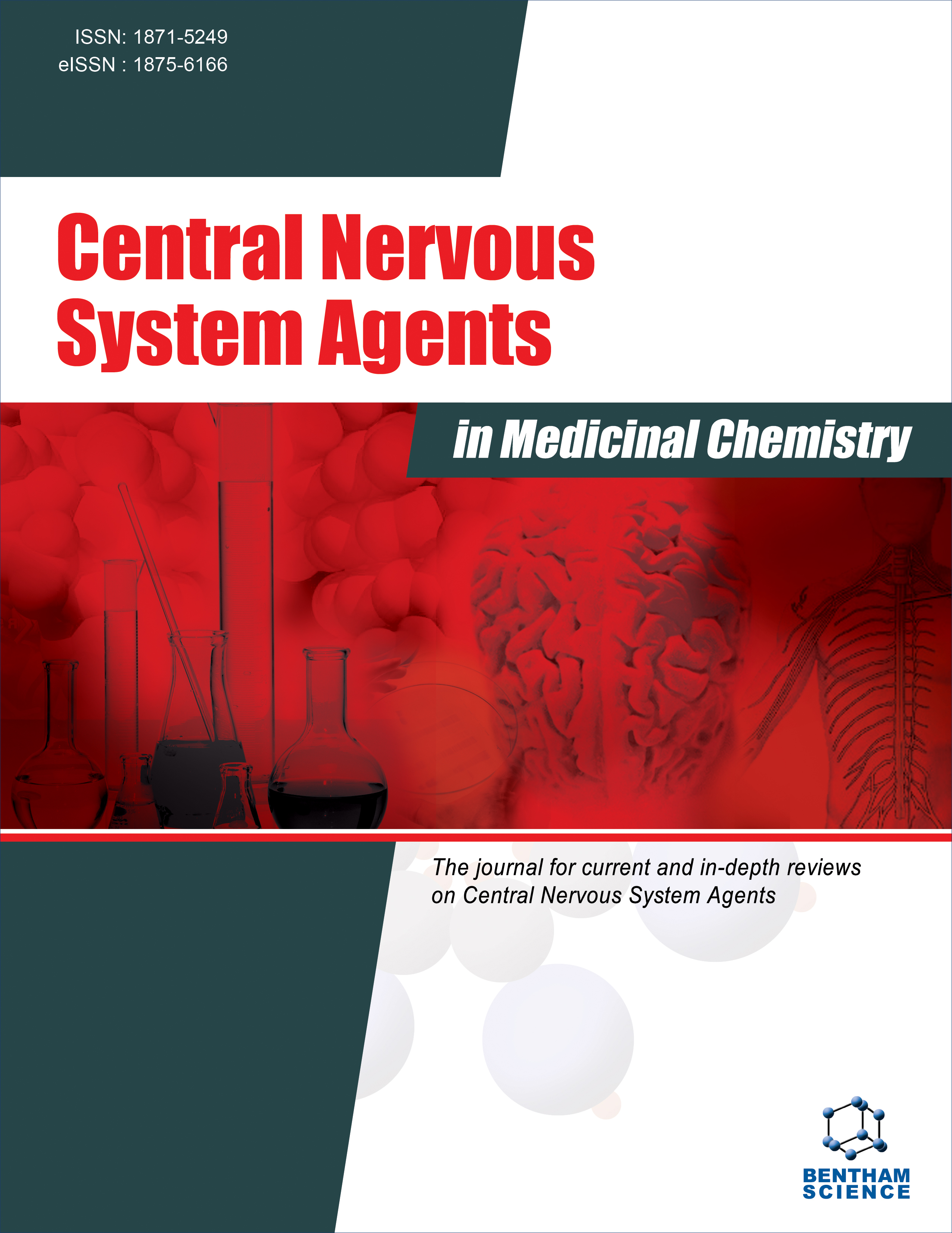- Home
- A-Z Publications
- Central Nervous System Agents in Medicinal Chemistry (Formerly Current Medicinal Chemistry - Central Nervous System Agents)
- Previous Issues
- Volume 8, Issue 3, 2008
Central Nervous System Agents in Medicinal Chemistry (Formerly Current Medicinal Chemistry - Central Nervous System Agents) - Volume 8, Issue 3, 2008
Volume 8, Issue 3, 2008
-
-
Antibodies As Promising Novel Neuroprotective Agents in the Central Nervous System Injuries
More LessAuthors: Hari S. Sharma and Aruna SharmaInjury to the central nervous system (CNS) initiates a series of complex events that are responsible for cell and tissue damage over time. The primary insult, i.e., trauma, ischemia, hypoxia, hyperthermia, etc., results in secondary injury cascades involving release of several neurochemicals and other factors that alters the brain micro-fluid environment. The most important secondary injury events include increased levels of Read More
-
-
-
Glutamate-Based Drugs for the Treatment of Clinical Depression
More LessAuthors: J. R. Leheste, C. Curcio, L. Baldinger, S. Sarwar, S. M. Zakhary, B. H. Hallas, J. M. Horowitz and G. TorresClinical depression is a chronic, recurrent mood disorder that causes significant disability and disease burden throughout the world. Not surprisingly, there is an enormous demand for finding (a) appropriate medications and devices for treating the clinical symptoms and (b) the underlying molecular mechanisms of the disease. Currently, most therapeutic treatments of depression indirectly target the serotonin and norepin Read More
-
-
-
Postischemic-Anoxic Encephalopathy After Global Forebrain Ischemia
More LessBy Baowan LinPostischemic-anoxic encephalopathy, defined as delayed progressive secondary injury occurs in humans after resuscitation following cardiac arrest. It is much more severe than the initial episode of global brain ischemia from heart attack. This encephalopathy is widespread and may happen after heart surgeries and hypoxia owing to acute carbon monoxide intoxication. About 30%-80% of survivors of resuscitation un Read More
-
-
-
Glycogen Metabolism and Brain Pathologies
More LessAuthors: Jean-Francois Cloix, Marie-Yvonne Ardourel and Tobias HevorGlucose is the main fuel for cell life, and supports a number of different processes in providing cells with energy. Excess glucose is polymerized into glycogen, which is an energy-glucose store. Alterations in glycogen content and/or synthesis have been reported in human neuropathologies, such as Alzheimer's disease, epilepsies and cancer. Epileptic foci are hypometabolic during the interictal period, and probably hypermetabolic Read More
-
-
-
Adult Neurogenesis and Drug Therapy
More LessBy P. TaupinCurrent drug therapy strategies for the nervous system are based on the assumption that the adult central nervous system (CNS) lacks the capacity to make new nerve cells and regenerate after injury. Contrary to a long-held dogma, adult neurogenesis occurs in the adult brain and neural stem cells (NSCs) reside in the adult CNS. Neurogenesis in the adult brain is modulated in a broad range of environmental conditi Read More
-
-
-
Biomedical Technologies for In Vitro Screening and Controlled Delivery of Neuroactive Compounds
More LessAuthors: John P. Frampton, Michael L. Shuler, William Shain and Matthew R. HyndCell culture models can provide information pertaining to the effective dose, toxiciology, and kinetics, for a variety of neuroactive compounds. However, many in vitro models fail to adequately predict how such compounds will perform in a living organism. At the systems level, interactions between organs can dramatically affect the properties of a compound by alteration of its biological activity or by elimination of it from t Read More
-
Volumes & issues
-
Volume 25 (2025)
-
Volume 24 (2024)
-
Volume 23 (2023)
-
Volume 22 (2022)
-
Volume 21 (2021)
-
Volume 20 (2020)
-
Volume 19 (2019)
-
Volume 18 (2018)
-
Volume 17 (2017)
-
Volume 16 (2016)
-
Volume 15 (2015)
-
Volume 14 (2014)
-
Volume 13 (2013)
-
Volume 12 (2012)
-
Volume 11 (2011)
-
Volume 10 (2010)
-
Volume 9 (2009)
-
Volume 8 (2008)
-
Volume 7 (2007)
-
Volume 6 (2006)
Most Read This Month
Article
content/journals/cnsamc
Journal
10
5
false
en


